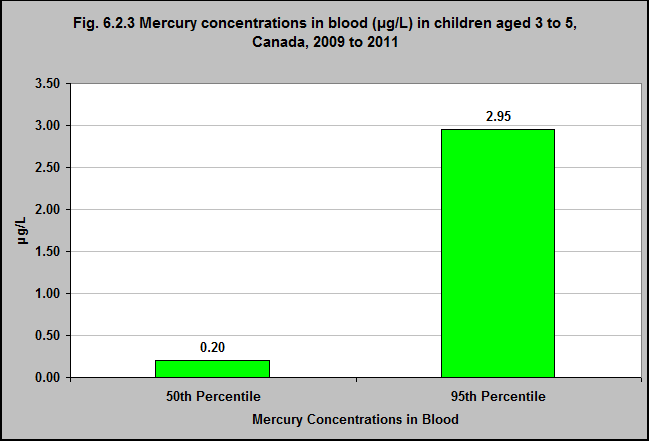Mercury concentrations in blood (µg/L) in children aged 3 to 5, Canada, 2009 to 2011

Note: This data reflects the children and youth whose concentration of the chemical met or surpassed the limit of detection. The 50th percentile concentration is the middle concentration, above and below which there is an equal number of values. The 95th percentile concentration is among the highest exposures.
Source: CICH graphic created using data adapted from Statistics Canada, Canadian Health Measures Survey, 2007-2009 and 2009-2011 – custom runs.
According to the Canadian Health Measures Survey, for children and youth aged 3 to 5 in Canada, the median (50th percentile) and 95th percentile blood mercury concentrations in 2009-2011 were 0.20 µg/L and 3.0 µg/L, respectively. However this age group had the highest concentration of all children up to 18.
Recent Canadian research recommends a maximum guidance value of 8μg/L for children under 19, pregnant women and women of childbearing age.2
2Legrand, M., Feeley, M., Tikhonov, C., Schoen, D., & Li-Muller, A. (2010). Methylmercury blood guidance values for Canada. Canadian Journal of Public Health, 101(1), 28-31.
Implications
Mercury exposure can have significant negative health consequences for young children including neurological, renal, cardiovascular, and immunological effects.1
1Environment and Climate Change Canada. Health Concerns. (last modified 2013). Mercury. https://www.ec.gc.ca/mercure-mercury/default.asp?lang=En&n=0EB35C98-1 – accessed March 12th, 2017.
